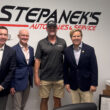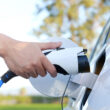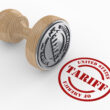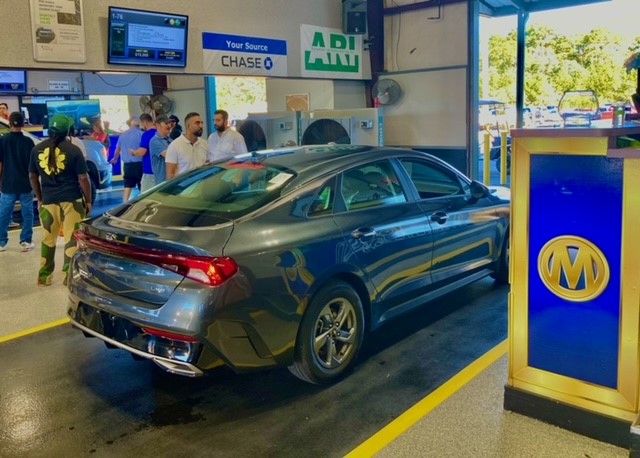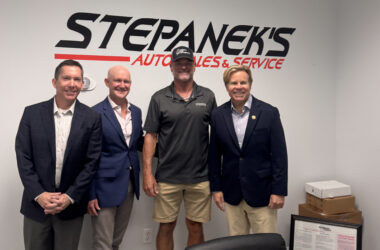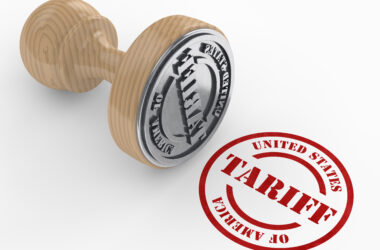From the February issue of UCD
A key trait I’ve noticed from the most successful car dealers is their ability to begin with the end in mind. For the most part, the beginning is successfully navigating the auction process, whether online or in person. Acquiring inventory that matches your clientele and lender requirements has never been more important.
This month I sat down with Jeremy Carlson, Owner of Rolling Wheels in Hesston, Kansas, and Chris “CB” Brown, Market Center Leader – Southern California at Manheim Auctions to gain insights on how to have the most successful auction experience.
John Dismukes: Jeremy, I know you attend auctions on a regular basis and have for many years. What steps do you take to prepare for an auction?
Jeremy Carlson: I make sure that I’m registered at the auction and they have my payment information. I’m also sure I have with me some sort of code reader/scanner. Time management is very important. You have to be there early to check the vehicles out in person.
JD: How do you determine which auctions to attend? Do you prefer online auctions or going in person to lay hands on the car?
JC: I prefer going to the auction in person and being in the lane.That way I can see the car in person, smell the pack of Marlboros that got smoked in it daily, and see the small hail dings, oil leaks, etc., that are not on the condition report (CR). I buy some red-light cars in person that I have personally checked out. I also attend online auctions but it’s always in the back of my mind that they need more recon than I think they do. Typically I want to be back in my office the same day. The closest auction to me is 40 minutes away. I also travel to one that is three hours away often, usually with that sale I get a hotel room the night before and drive back once the sale is over. I could drive up and back the same day but that wouldn’t give me any time to check out the cars beforehand.
JD: Likewise CB, how does Manheim prepare for auction day and ensure that the vehicles are in optimal condition for auction?
CB Brown: We’re here to do whatever the seller asks us to. So what’s optimal for one seller may be different than optimal for another. The sellers really are the decision makers of what they want to take advantage of. We view this as a partnership, and we’re ready to deliver on a full range of recon services, things like paint and body repair, mechanical repair, detailing, imaging, paintless dent removal, alloy wheel repair, etc…
All of those things go into the calculus for each individual seller, and we’re just providing that service that makes the most sense to them.
JD: Let’s talk about condition reports, how does Manheim ensure that the CR’s are accurate?
CB: Our goal here is to drive consistency throughout the process at every one of our Manheim locations. So in regard to the criteria, we have a process that’s built into our condition report writing program that delivers what we think is the gold standard of evaluation in our industry. That’s called auto grade, and it delivers a grade from 0.0 to 5.0. It has become the standard for the industry in the wholesale marketplace. We have a really robust and extensive training program for inspectors, as well as an auditing program. And what that does is it helps to ensure that the standards we’ve set for condition reports are being met.
JD: Jeremy, other than the CR what are some criteria that you use to decide which vehicles to bid on?
JC: I focus on vehicles that have not been at auction multiple times or recently. Often you will see either a wholesaler or another dealer just bought the car at an auction and a few days later they are selling it again. I typically stay away from those. I also look to see if the auction has the title. I’ll be more inclined to bid if I know I will get a title quickly. After all, without a quick title, I have dollars tied up in a vehicle I can’t sell.
JD: CB, how do your auctions ensure that the buyer is not going to be stuck with a vehicle they can’t sell because of title issues?
CB: If you’re selling, you need a valid title on the vehicle that you’re bringing to sell. It’s really the responsibility and duty of the seller to make those required disclosures with it. We want to give as much information as we can about an assessment of the vehicle. But ultimately, it’s up to the seller to make the declarations and disclosures on that.
JD: Let’s talk about bidding strategy and common mistakes to avoid during bidding. What are some tips you can give our readers Jeremy?
JC: Do your homework and don’t let the auctioneer or ringman guilt you into a bid. Make sure you know the auction house rules and that you have the proper means to pay for what you won at their auction.
Every auction is different. Another mistake is bidding when no one else is. Often they will pull bids out of the air or most commonly referred to as the “Coke Machine” bidding. It happens all the time. You need to be aware as best you can be to where you can see that someone else is actually bidding.
JD: One thing about the car business is that no matter how thorough and prepared we are, mistakes will occur. What does Maheim do to continuously improve your services?
CB: Feedback is so critical and there are so many different ways that we collect it. We have a survey from everyone who buys from us. Our team is out there in the lanes and in the field talking to our clients every single day. We host focus groups. All of it is kind centered around the idea of this relentless focus on our clients. We take their feedback and then we act on it. Our belief is we are not successful unless the clients are successful.
JD: Jeremy, can you share a memorable success or failure from a past auction and what did you learn from it?
JC: Several years ago, I bought a late-model vehicle from an auction over 700 miles away. I bought this for a customer that wanted a specific color combo that I couldn’t find locally. The CR scale is 1-5 and this was a 4.5 on a vehicle with 50,000 miles. Pictures looked good, and this was a fleet vehicle from a well-known company. It wasn’t a wholesaler or another dealer selling it. The last couple thousands of dollars in bids were all from online bidders including me. So people in the lane weren’t bidding. This should have been my clue to not buy it. It takes me a couple of weeks to get the vehicle to my dealership. It shows up with a broken front bumper cover and the floormats that were specific to this vehicle had been removed even though those were in the picture. CR made no mention of the bumper cover. Keep in mind I paid almost retail for this vehicle for my good customer. I immediately contacted the auction about the bumper cover. I didn’t complain about the $200 in mats. I was completely ghosted from the auction. They would never call me back. So I just sucked it up and paid to get it fixed and sold. Looking back over the pictures it was obvious they cropped or took a couple of the front pictures to hide the damage on the bumper cover. Look at pictures more carefully! If you have days before the sale as I did in this case, call the auction and ask the rep to send you some pictures they take of where you ask for them.
Let’s keep the conversation going. Let me know your thoughts, email me at john@niada.com


